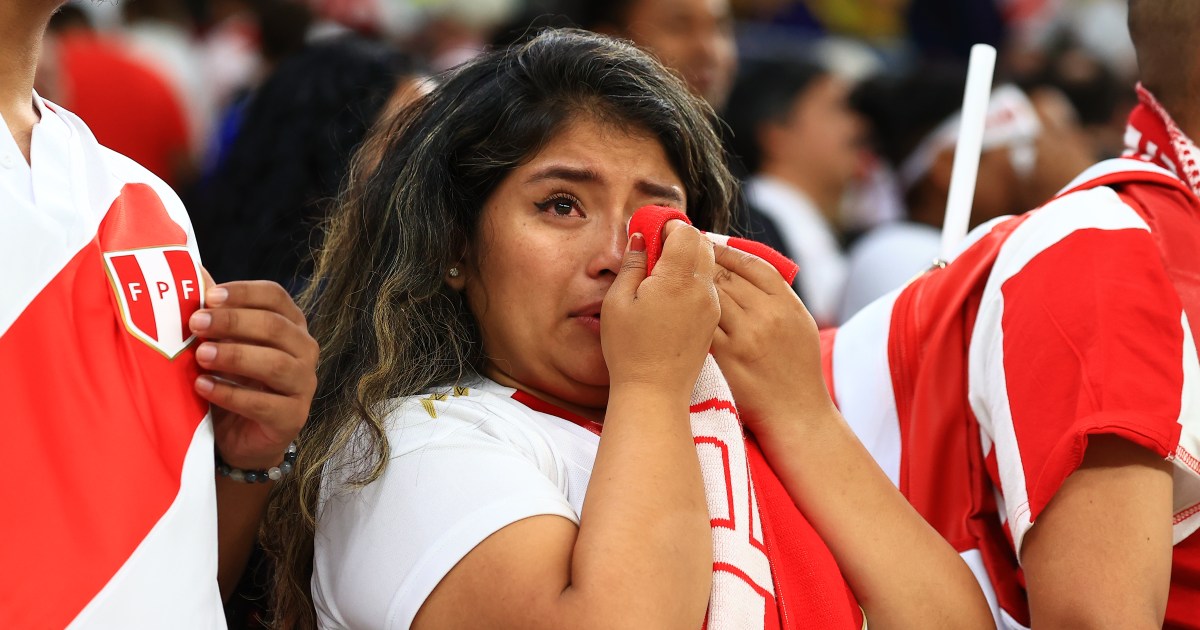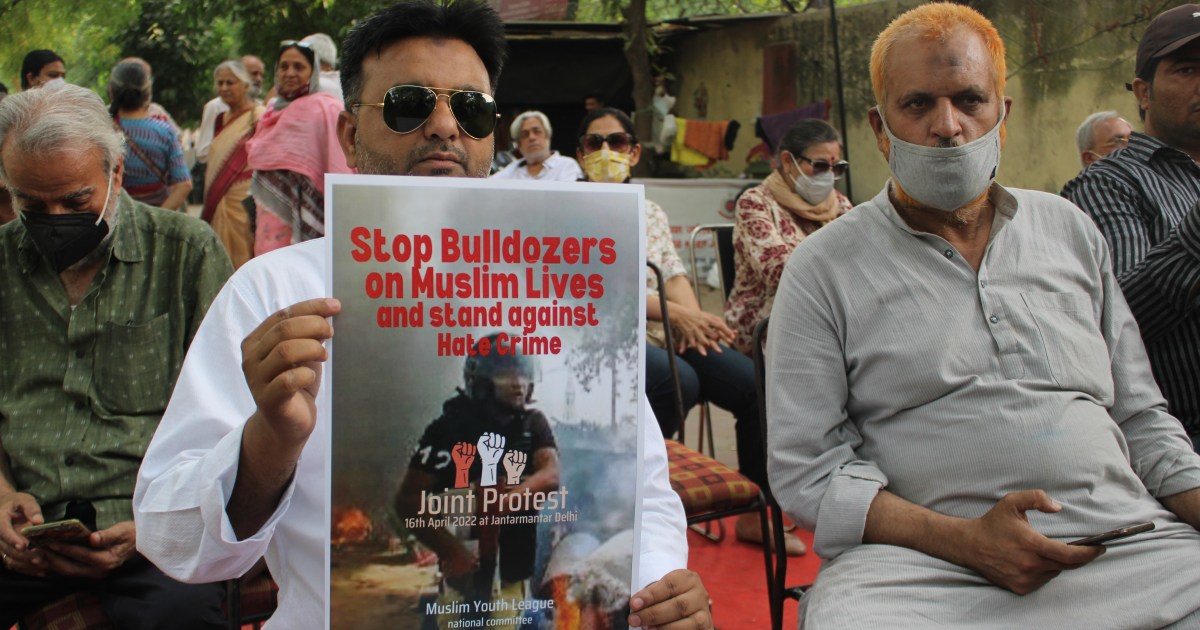Why did Putin impose martial law in occupied Ukrainian regions? | Russia-Ukraine war News
Russian President Vladimir Putin has introduced martial law in partially occupied Ukrainian regions that Moscow claimed to have annexed last month but is struggling to defend amid an ongoing counteroffensive.
In televised remarks to members of his Security Council on Wednesday, Putin said the new measures were aimed at boosting the security powers of all Russia’s regional governors to support what he calls a “special military operation”.
The declaration marks the latest escalation by Putin to counter a series of significant battleground defeats since the start of September.
Here is what you need to know:
What is in the new decree?
Putin’s decree establishes varying levels of “martial law readiness” across Russia and in Russian-occupied Ukrainian territories. These range from “basic” across all of Russia to “maximum” in Russian-occupied Kherson, Zaporizhia, Donetsk and Luhansk regions.
In the four areas of maximum readiness, the order grants sweeping emergency powers to Russian-installed governors to “meet the needs of Russia’s armed forces” and calls for the institution of “territorial defence” headquarters with unspecified roles.
Authorities can also curb movement and set curfews confining people to their homes.
Russian-appointed officials in Kherson, amid growing pressure from a Ukrainian counteroffensive, had already announced a seven-day ban on civilians entering the region. Vladimir Saldo, head of the Russian-installed administration, was quoted by state-run news agency TASS as saying on Wednesday a curfew was not needed for now, shortly before confirming that he was handing over authority to the military.
Shortly before Putin’s announcement, Saldo had called on residents to evacuate across the Dnieper river, telling them to relocate “in any part of Russia” and saying the Russian government would provide housing vouchers. Ukraine branded the evacuation a “propaganda” show.
The decree also enables governments to forcibly “temporarily resettle” civilians. Ukraine has accused Russia of deporting people from occupied territories, while the United States estimated in September that Russia may have forcibly deported between 900,000 and 1.6 million Ukrainians.
Additionally, martial law in Russia automatically entails a general or partial mobilisation of troops. A partial mobilisation has already taken place in Russia and extended to the occupied regions, so it is unclear if more men will be called up.
The decree also calls for unspecified “mobilisation measures in the economic sphere”. This is likely to provide economic and industrial support to Putin’s mobilisation of at least 300,000 Russian men, according to an analysis by the Washington-based Institute for the Study of War (ISW).
Why declare martial law now?
In a statement on Thursday, the ISW called Putin’s declaration “largely legal theater meant to legitimize activities the Russian military needs to undertake or is already undertaking while creating a framework for future mobilization and domestic restrictions”.
It added: “These moves are likely necessary to fulfill basic military requirements, such as feeding, housing, equipping, and transporting mobilized and conscripted troops to the front lines; forcing defense contractors or other private businesses to align with government production requirements; and more easily controlling both the Russian population and the Ukrainian civilian populations in Russian-occupied parts of Ukraine.”
Putin said the move was a response to the Ukrainian government’s failure to accept the results of a popular vote last month in the four annexed regions. Ukraine and its Western allies have rejected the legitimacy of the so-called referendums, calling them a “sham”.
“As is well known, the regime in Kyiv has refused to recognise the will of the people,” Putin said. “We are trying to resolve difficult large-scale challenges on providing security to Russia and protecting the future of Russia, defending our people.”
The introduction of martial law is the latest in a series of escalatory steps as Russia faces heavy losses on the battleground on southern and eastern fronts.
Vitaliy Kim, governor of the Mykolaiv region in southern Ukraine, said he believed Putin’s decree was intended to enable Russia to “mobilise our people who’ve remained” in occupied territory. Compelling civilians to serve in the armed forces of an occupying power is defined as a breach of the Geneva Conventions on conduct in war.
According to the ISW, Putin “may be setting conditions for a less orthodox kind of under-the-radar mobilization: the creation of Ukrainian-style Territorial Defense Forces”.
Ukraine’s Territorial Defense Forces are composed of a core of veterans and part-time reservists, largely officers, but can be built out by civilian volunteers in wartime who are then led by the officer corps.
According to the ISW, Yevgeny Prigozhin, financier of the private military company Wagner, announced on Wednesday that he had put senior Wagner commander Andrey Bogatov in charge of “creat[ing] a people’s militia”.
Wagner, a shadowy network of mercenaries providing fighters for hire in recent years in Syria, Mali and the Central African Republic, has embraced an ever-public image in Ukraine. The group is allegedly bankrolled and controlled by Prigozhin, a Russian oligarch known as “Putin’s chef” for his many catering contracts, through a network of front companies.
How has the order been received?
Ukrainian presidential adviser Mykhailo Podolyak said on Twitter the introduction of martial “does not change anything” for Ukrainian forces. “We continue the liberation and de-occupation of our territories.”
“Martial law” implementation on the occupied territories by RF should be considered only as a pseudo-legalization of looting of Ukrainians’ property by another “regrouping”. This does not change anything for Ukraine: we continue the liberation and deoccupation of our territories.
— Михайло Подоляк (@Podolyak_M) October 19, 2022
Sergiy Khlan, an aide to the removed head of the Kherson region, said Putin’s aim was “to create a kind of panic in Kherson and an image [to fuel] propaganda”.
Oleksiy Danilov, secretary of Ukraine’s National Security and Defense Council, criticised Moscow’s move as criminal.
“Putin’s martial law in the annexed regions of Ukraine is preparation for the mass deportation of the Ukrainian population to depressed areas of Russia in order to change the ethnic composition of the occupied territory,” Danilov said.
United States President Joe Biden said the measure was a sign that Putin had found himself “in an incredibly difficult position”.
“What it reflects to me is it seems his only tool available to him is to brutalise individual citizens in Ukraine, Ukrainian citizens to try to intimidate them into capitulating. They’re not going to do that,” he told reporters on Wednesday.
The US State Department had previously said Russia was resorting to “desperate tactics” to maintain its grip on the annexed regions.
“It should be no surprise to anybody that Russia is resorting to desperate tactics to try and enforce control in these areas,” State Department deputy spokesperson Vedant Patel said at a daily press briefing.




